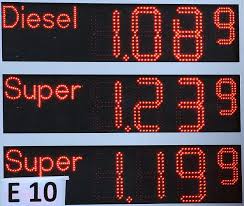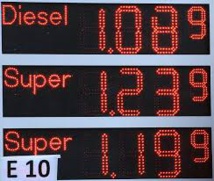The difference in their estimates indicates a huge uncertainty about supply and demand. This year, consumption was increasing faster than forecasted, and prices have recently risen. At the same time, it is also impossible to predict the rate of production growth in the United States. An unexpected change in one of the factors next year may tip the scales in one direction or another.
In recent months, the situation has definitely improved, says Vitol’s CEO Ian Taylor. In this case, producers of oil shale can still bring down the market, as happened in 2014.
Over the past three years, production in the US has been growing and falling, and OPEC has gradually introduced historical changes in production policy. Against this background, oil first fell in price by half from $ 100, then recovered to $ 65 and collapsed to $ 28 (a minimum over 12 years). Currently, Brent crude is trading at $ 57.4 per barrel. It is difficult for traders to predict the further movement of prices in such an unstable environment. Over the past four months, the International Energy Agency has steadily increased demand estimates. According to its forecasts, in 2017 consumption will grow at the maximum rate in two years. Nevertheless, even if OPEC prolongs the agreement on the reduction of production by the end of 2018, it will not affect the inflated reserves that are pressing the quotes.
OPEC has a different opinion. The cartel predicts that excess stocks will disappear by the third quarter of 2018. A significant difference in estimates can be explained by contradictions in relation to countries that are not members of OPEC. According to the IEA forecasts, next year they will increase production by 1.5 million barrels a day - by 600 thousand more than OPEC believes. Gunvor’s CEO Torbjorn Tornqvist is cautiously optimistic about the oil market next year. In his opinion, OPEC will extend the production limitation for at least six months, since Russia and Saudi Arabia have shown that they are ready to do everything possible to maintain the market. At the same time, all parties recognize that they can make mistakes (which is not surprising for experienced market players).
Vitol’s General Director Ian Taylor believes that interruptions in oil supplies from the Kurdish region of Iraq could raise prices in the short term above $ 60 per barrel. Alex Beard, the head of the oil department at Glencore, says: "I'm sure that we will probably see oil both at $ 100 and $ 25 - that's just the nature of its price."
source: bloomberg.com
In recent months, the situation has definitely improved, says Vitol’s CEO Ian Taylor. In this case, producers of oil shale can still bring down the market, as happened in 2014.
Over the past three years, production in the US has been growing and falling, and OPEC has gradually introduced historical changes in production policy. Against this background, oil first fell in price by half from $ 100, then recovered to $ 65 and collapsed to $ 28 (a minimum over 12 years). Currently, Brent crude is trading at $ 57.4 per barrel. It is difficult for traders to predict the further movement of prices in such an unstable environment. Over the past four months, the International Energy Agency has steadily increased demand estimates. According to its forecasts, in 2017 consumption will grow at the maximum rate in two years. Nevertheless, even if OPEC prolongs the agreement on the reduction of production by the end of 2018, it will not affect the inflated reserves that are pressing the quotes.
OPEC has a different opinion. The cartel predicts that excess stocks will disappear by the third quarter of 2018. A significant difference in estimates can be explained by contradictions in relation to countries that are not members of OPEC. According to the IEA forecasts, next year they will increase production by 1.5 million barrels a day - by 600 thousand more than OPEC believes. Gunvor’s CEO Torbjorn Tornqvist is cautiously optimistic about the oil market next year. In his opinion, OPEC will extend the production limitation for at least six months, since Russia and Saudi Arabia have shown that they are ready to do everything possible to maintain the market. At the same time, all parties recognize that they can make mistakes (which is not surprising for experienced market players).
Vitol’s General Director Ian Taylor believes that interruptions in oil supplies from the Kurdish region of Iraq could raise prices in the short term above $ 60 per barrel. Alex Beard, the head of the oil department at Glencore, says: "I'm sure that we will probably see oil both at $ 100 and $ 25 - that's just the nature of its price."
source: bloomberg.com



















